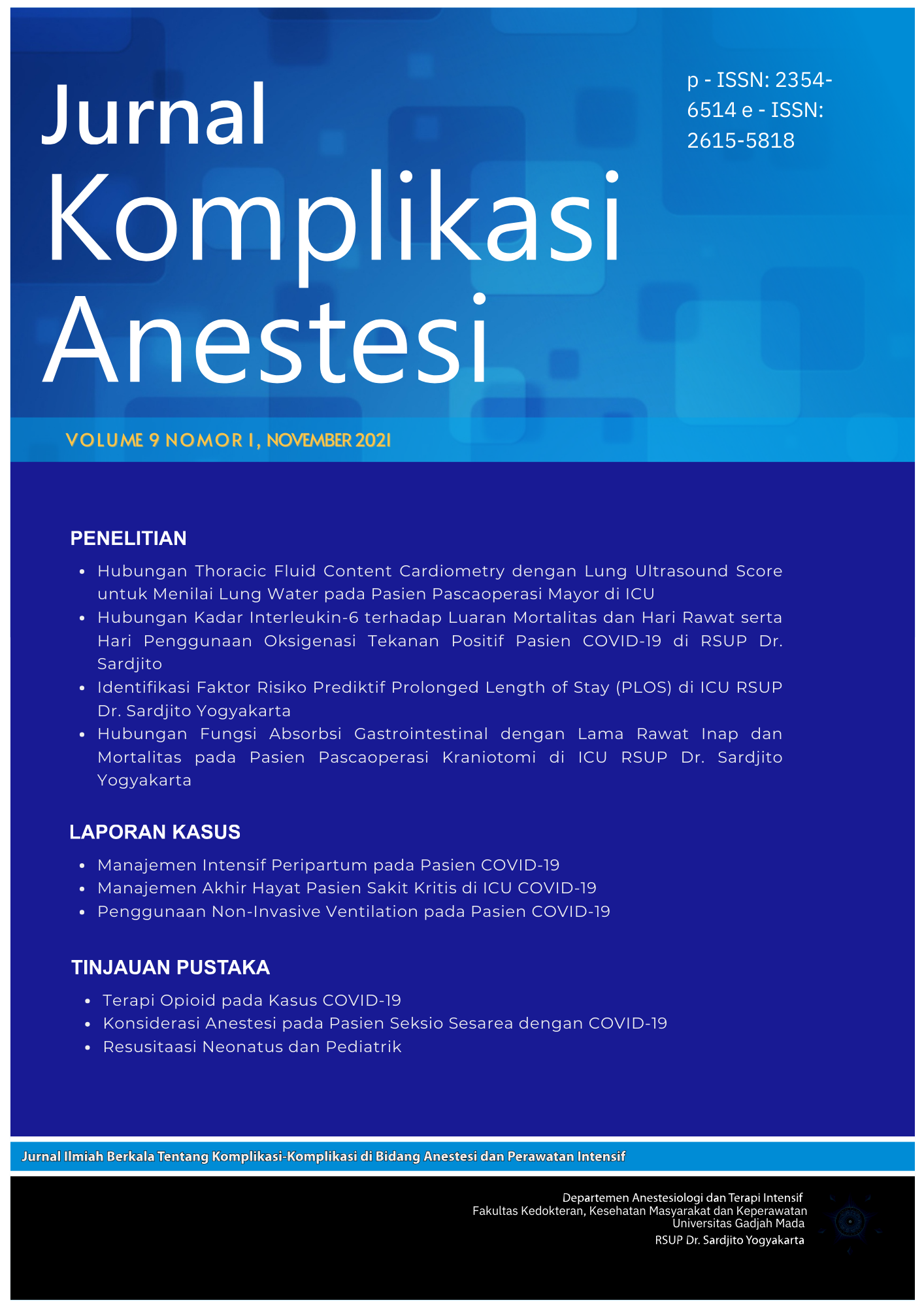Identifikasi Faktor Risiko Prediktif Prolonged Length of Stay (PLOS) di ICU RSUP Dr. Sardjito Yogyakarta
Abstract
Background: One method to improve the service quality in the Intensive Care Unit (ICU) is to develop a risk prediction system to assess and analyze associated risk factors that cause the prolonged length of stay (PLOS) at the ICU. In Indonesia, there is no risk prediction system developed from the population of Indonesians themselves who have different disease characteristics and patterns from European countries that have developed risk prediction such as APACHE IV and SAPS II.
Objective: This study aims to identify the predictive factors of PLOS in ICU RSUP Dr. Sardjito. The long-term goal of this research is to develop a PLOS risk prediction model in the ICU based on the patient population treated at RSUP Dr. Sardjito.
Methods: A retrospective cohort study was conducted on 451 patients in the ICU RSUP Dr. Sardjito. Variables that are thought to have a relationship with PLOS were tested using bivariate and multivariable logistic regression tests. After that, an assessment of the power of discrimination and calibration of the new PLOS predictive risk scoring system was carried out using the Area Under the Curve (AUC) method. A calibration test with Hosmer-Lameshow was done to get a comparison value between the observed and expected PLOS.
Results: Factors identified as risk factors for PLOS in the ICU RSUP Dr.Sardjito were the medical cases, GCS value <8, use of vasoactive or inotropic drugs, sepsis, respiratory failure, and renal failure in both univariate and multivariate tests. Factors that have passed the multivariable test were used as predictors of PLOS in the ICU and a discrimination test was performed with the AUC. The discriminatory ability of the PLOS predictive model was 0,878 (95% CI). This value is classified as strong as a predictor model. The calibration test with Hosmer-Lameshow obtained a p-value of 0.547 (p>0.05) which means that this model was good.
Conclusion: The medical cases, GCS value <8, use of vasoactive or inotropic drugs, sepsis, respiratory failure, and renal failure are predictive factors for PLOS in the ICU RSUP Dr. Sardjito. The discriminatory ability of these factors is strong and is able to predict the incidence of PLOS in the ICU RSUP Dr.Sardjito.
Copyright (c) 2021 Rizqi Ahmad Fauzi, Akhmad Yun Jufan, Yunita Widyastuti

This work is licensed under a Creative Commons Attribution-NonCommercial-ShareAlike 4.0 International License.
The Contributor and the company/institution agree that all copies of the Final Published
Version or any part thereof distributed or posted by them in print or electronic format as permitted herein will include the notice of copyright as stipulated in the Journal and a full citation to the Journal.

















